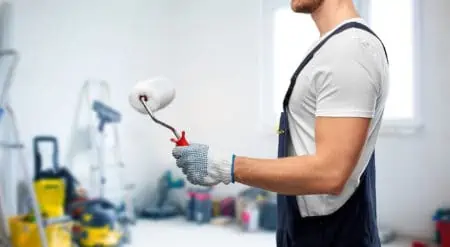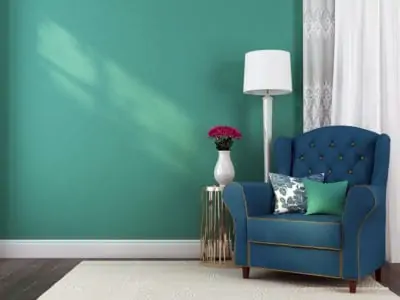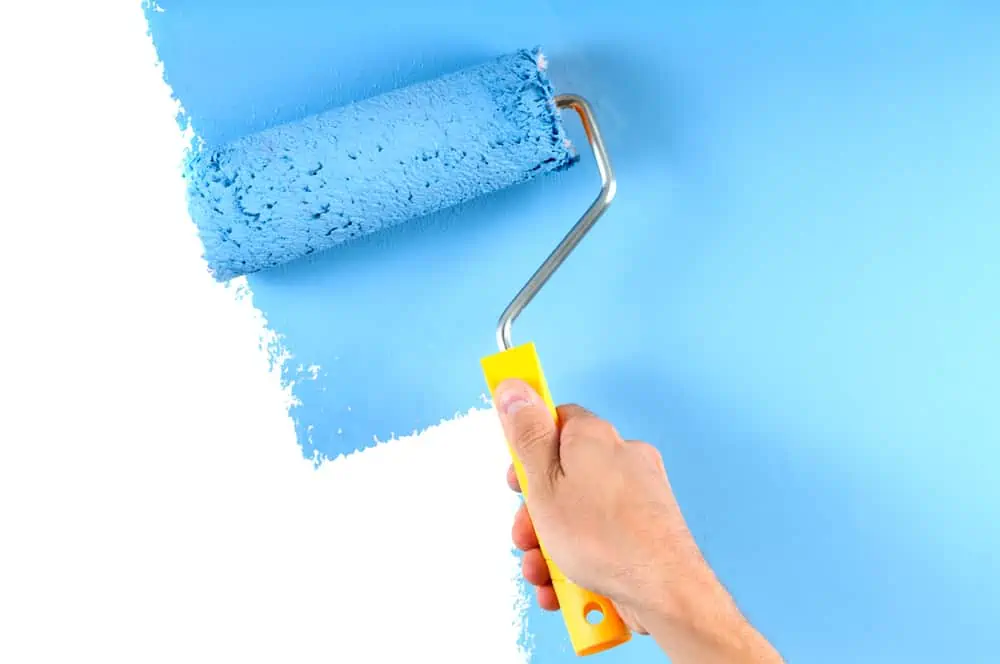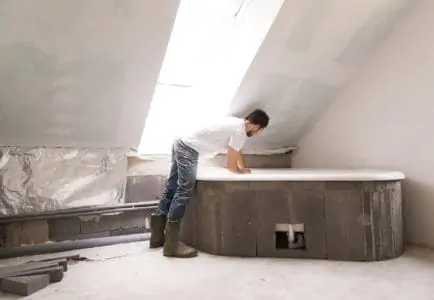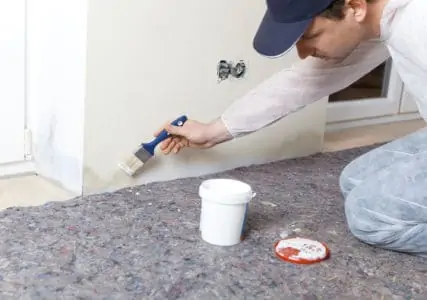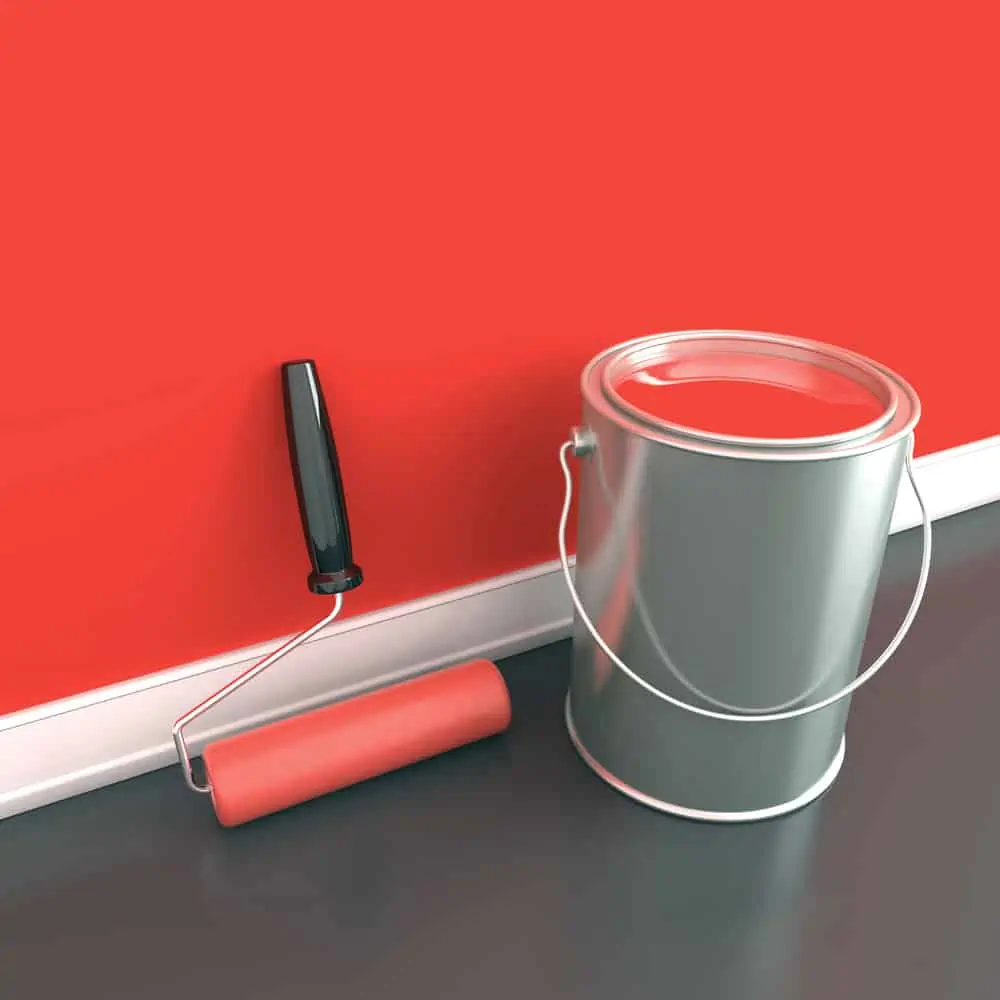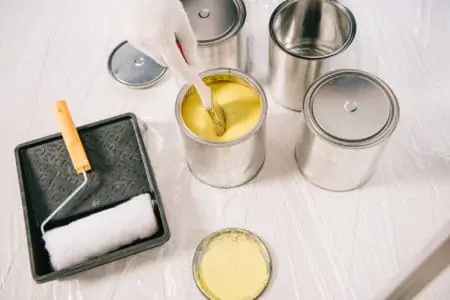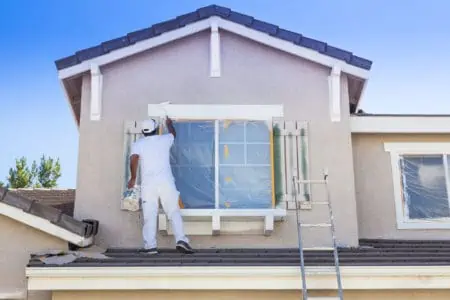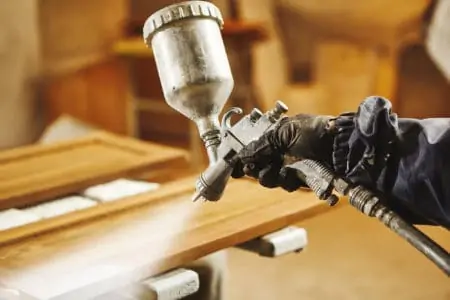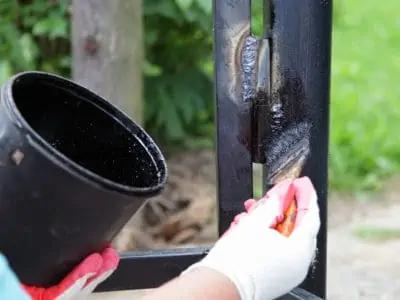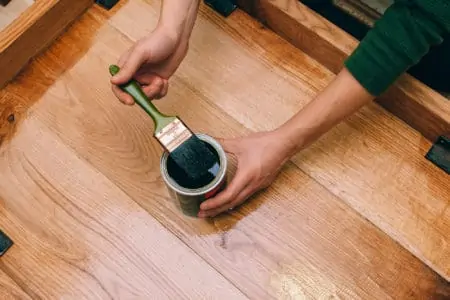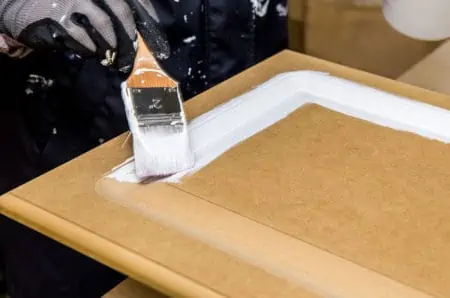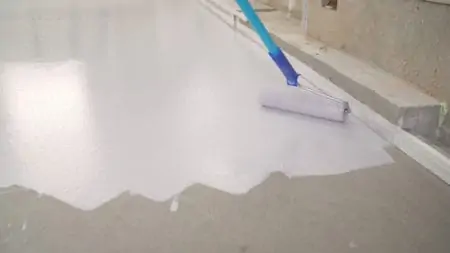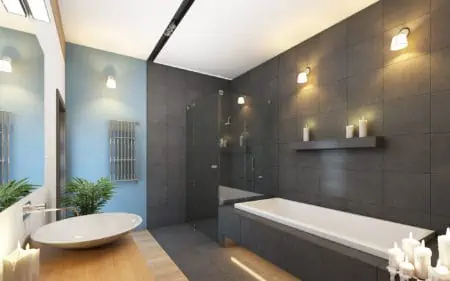Painting a room is the fastest and most effective way to complete a transformation. It is relatively easy to do, and most people have the skill set to complete the task satisfactorily. However, how much does it cost to paint a room?
We look at the average cost to paint a room, including whether you should hire a professional or do the work yourself.
Key Takeaways
- Calculate room’s square footage: Measure the length and height of the walls, including any baseboards and trim, and deduct the size of windows and doors.
- DIY vs. professional: Hiring a professional painter can cost between $2 and $4 per square foot, while doing it yourself can save money, with costs ranging from $100 to $300.
- Choose paint type and finish: Consider the room’s purpose, moisture levels, and desired appearance when selecting paint types, finishes, and colors. Costs can range from $15 to $50 per gallon.
- Prep the room: Clean walls, fill cracks, sand, and prime surfaces before painting. Cover floors and fixtures with plastic sheeting or drop cloths to protect against paint splatters.
Average Cost to Paint a Room
The costs for painting a room can vary depending on the room size and paint used. Also, whether you get it done professionally or take the DIY approach has a bearing.
You should expect to pay between $955 to $2,890 per room, with the national average topping $1,892. The cost per square foot ranges from $2 and $6.
One of the most significant influences on the price is labor and material cost. Labor prices vary between $170 and $680, with some decorators charging as much as $20 to $50 per hour.
How to Calculate Costs to Paint a Room
Knowing how much it is to paint a room is relatively easy to calculate. First, you will need to find the square footage of your walls. Also, don’t forget to factor in the ceiling and floor if they are included in the project.
Wall Square Footage
To find the square footage of the walls, measure the length of the four walls. Here’s an example:
For a 10×12 foot wall, add 10+12+10+12 to give you a combined length of 44 feet. Next, measure the height of the wall (typically eight feet) and multiply the height by the total length. The square footage works out as 352.
Floors, Ceilings, Windows, and Doors
You can use the same method to calculate the ceiling and floor area. Don’t forget to subtract the window and door spaces. Again, the same calculation is applied.
Assuming the window square footage comes in at 16, and the door measures 21 square feet, your room footage is 315 square feet.
Make A Note
If the baseboards and trim are also included, don’t forget to factor them into the final calculation.
Hiring a Professional
Most decorators charge between $2 and $4 per square foot, so the total labor costs could be as low as $630 and as high as $1,260.
Paint Costs
One gallon of paint typically covers 400 square feet; however, this varies depending on the wall surface quality. Also, don’t forget that two coats are always recommended, so you need to double the amount to two gallons.
Room Painting Costs
The overall cost to paint a room varies because of several factors. The square footage of the walls will increase or decrease the costs, and the type of paint you use also makes a difference.
By Square Footage
Rather than try and explain the costs to paint walls only and total room coverage, including labor, here’s a handy guide:
| Room Size (Square Footage) | Average Price for Walls Only (Incl Labor Costs) | Average Price per Room (Incl Labor Costs) |
| 5×8 (40 square foot) | $60 to $140 | $120 to $160 |
| 10×10 (100 square foot) | $150 to $350 | $300 to $400 |
| 10×12 (120 square foot) | $180 to $420 | $360 to $480 |
| 12×12 (144 square foot) | $15 to $505 | $430 to $575 |
| 14×14 (200 square foot) | $300 to $700 | $600 to $800 |
| 20×15 (300 square foot) | $450 to $1,050 | $900 to $1,200 |
| 20×20 (400 square foot) | $600 to $1,400 | $1,200 to $1,600 |
| 20×25 (500 square foot) | $750 to $1,750 | $1,500 to $2,000 |
Location
Regional wage variations have a massive impact on the final bill. The hourly rates can vary between $20 and $50. We aren’t talking about minimum rates here because your decorator will be a skilled worker.
Prices are likely to increase in urban and city areas, while rural costs are often lower. You should factor between 75 and 80 percent of the total bill in labor costs alone.
Room Type
Believe it or not, the room type plays a part in changing the costs. Kitchens and bathrooms are cheaper than bedroom walls because of cabinets and appliances. Let’s look at the rooms in detail:
Bedroom or Living Room
Bedrooms and living rooms have a greater wall area. Besides factoring in the size and number of windows and doors, it is pretty easy to determine the costs. You would expect to pay more for a living room paint job than you would for a kitchen.
A typical 200 to 300 square foot bedroom should set you back between $600 to $1,240. A standard 400 square foot living room will cost you about $1,600.
Bathroom
Bathrooms are usually small, drastically reducing your costs and making the paint job easier. A bathroom has less wall space thanks to bathtubs and showers. That said, you do need specific moisture-repellent paint because of high humidity levels.
You should expect to pay between $60 and $400 for a standard 20 to 100 square foot bathroom.
Kitchen
Painting a kitchen is either cheaper because of the cabinets or more complex because of the cabinets (talk about sitting on the fence). On the whole, there is less wall space, reducing the materials you need.
However, taping off cabinets with plastic sheeting and protecting appliances against paint splatters complicates the task considerably.
You should expect to pay in the region of $600 to $1,320 for a typical 200 to 360 square foot kitchen.
Garage
The price for painting a typical 12×16 foot garage is similar to the cost of painting a basement. There are many wall surfaces, and the estimate will almost certainly include a concrete floor.
You also need to factor in the cost of specialist damp-repellent paint, which increases the overall spending. You won’t get much change from $2,000.
Paint Type
Not all paint is suitable for every room. Bathrooms and kitchens are damp environments, and if you use standard paint, it will flake off. You can also get water-based and oil-based paints suitable for different uses around the home.
Depending on the paint you use, you could spend between $15 and $50 per gallon.
Latex Vs. Oil-Based
Latex paints are sometimes called water-based paints. It means they are kinder to the environment, contain fewer VOCs (volatile organic compounds), and are easier to clean up afterward.
They are better for interior surfaces because they give off fewer odors. Oil-based paints are more robust, resisting water and the elements more effectively. Oil-based paints are better for bathrooms and kitchens because of the high moisture content.
Paint Finish
There are several paint finishes to choose from. Some are more suitable for wet environments like kitchens, bathrooms, and basements, while others are better suited to bedrooms and living rooms.
Paint finishes are referred to as sheens. The higher the shine, the greater the resin and binder content of the paint. This directly affects the price per gallon because resins and binders increase costs.
Like this True Value Paint, gloss has the highest sheen and dries with a protective film. It is perfect for exterior and interior surfaces and particularly effective on door and window frames. Here is a rundown of different paint types and costs:
| Paint Type | Cost Range | Best Use |
| Gloss | $17 to $80 | Bathrooms, kitchens, baseboards, trim, doors. |
| Semi-gloss | $12 to $70 | Bathrooms, kitchens, baseboards, doors, trim. |
| Satin | $12 to $60 | Living areas, hallways, general decorating. |
| Eggshell | $11 to $60 | Living areas, hallways, general decorating. |
| Flat (matte) | $10 to $70 | Living areas, hallways, general decorating. |
Paint Color
The color you choose affects the price of the paint; white is the most common and contains the least pigments. Just like resins and binders, pigments increase the overall cost. So, if you want to paint your room the color of the rainbow flag, factor in the increased price.
Light and neutral colors are popular because they bounce light around the room and make your spaces seem more inviting. This Flat White Painter’s Touch Wall Paint is a great choice for living rooms and bedrooms.
Darker colors make the room feel cozy and warm, but they do have a shrinking effect on your perception of room size. If you have a small apartment, lighter colors might be better.
The average property needs six gallons of paint per coat. At a price of $15 to $50 (depending on the brand), you could spend $90 to $300 per room.
Primer Type
Don’t underestimate the importance of a good-quality primer. It seals the surface, makes it less porous, blocks stains, suppresses mold, and gives the paint a better bonding surface.
This KILZ Interior and Exterior Primer is an excellent example of the kind of primer you should consider.
Oil primers are excellent for wood, metal, and exterior surfaces. Water-based paints are perfect for concrete, masonry, drywall, and other interior surfaces. Depending on the primer you use, expect to pay between $16 and $60 per gallon.
Trim, Baseboards, and Ceiling
Most baseboards and trim sit in high-traffic areas or get a lot of use. Think how many times you open and close doors and windows, and you’ll get the picture. Using a gloss or semi-gloss reduces chips and scuffs and protects the wood.
Ceilings get a lot of punishment, especially in kitchens and bathrooms, where steam and heat attack the paint continuously. Use moisture-resistant ceiling paint like this KILZ Stainblocking Ceiling Paint. It goes on pink to make it easier to see missed patches but dries white.
You should expect to pay between $2 and $4 per square foot for baseboard and trim. Windows will set you back $35 to $50, and ceilings up to $3 per square foot.
Additional Paint Costs
It’s not just the price of the materials you need to factor in; you also need to consider additional costs. Storage, removals, wall and ceiling repairs increase the money you spend.
Repairs
The quality of your walls and ceilings make a massive difference to the costs. The amount of prep work increases the time and money spent correcting issues. Cracks need filler, like this Red Devil Spackling Paste.
It smooths on with a putty knife, dries within minutes, and is guaranteed never to shrink and crack. The overall costs of making repairs could be as little as $50 and as high as $110.
Removing Furniture
Painting a room with the furniture still in situ is incredibly challenging. You will need some help to remove the furniture and ornaments, and you may need to pay for storage. The average monthly storage cost for a 5×10 foot unit is between $65 and $90.
Removing Wallpaper and Paint
You may be removing wallpaper to paint a room. If that’s the case, you will need to factor in the increased costs. Likewise, you may need to remove existing paint.
The price to take off wallpaper is about $2 per square foot, and paint removal ranges from $4 to $9 per square foot.
Cleaning Up
Once you have completed the painting job, you will need to clean up the room. Detergents and additional cleaning products like these microfiber cloths by Mr. SIGA add to the total bill.
You can easily spend between $20 and $50 completing a total cleanup.
Tips for Saving Money On Painting
We all like saving money, even if your name is Jeff Bezos. Trimming the costs helps your money go further. Who knows, it might even stretch to a takeout after the work is completed to reward yourself.
Buy In Bulk
Bulk buying is an excellent tip for saving dollars. If you have two or three rooms to decorate, buying a bulk lot of paint makes your pennies go that bit further.
Use Primer
Please don’t skip the primer stage, no matter how tempting it is. Primer prepares the surface ready to take the paint. You use less paint; it sticks better and spreads more evenly.
Primer also preserves the paintwork against mold and stains. Porous surfaces soak up paint like a sponge. So sealing a concrete wall or floor with primer is a lot cheaper than wasting expensive paint getting the same results.
Get Advice
Ask for help at your local hardware store. They will steer you in the right direction when choosing paint and tools.
Don’t buy the cheapest brushes and rollers as this affects the finish. Don’t buy the cheapest paint as this is a false economy. You will use twice as much to get the same finish as a quality brand.
Stick to a Few Colors
The more disciplined you are with your color choices, the further the paint will go, reducing your costs. Painting three rooms white with one accent wall will have the same impact as choosing three different colors.
Wash the Walls
Washing the walls will remove dirt and stains that decrease the paint’s bond. If you don’t wash them, in time, it will flake off, and you will need to repaint sooner than necessary.
Choose the Right Time of Year
Fall or early winter are the best times to paint your interior spaces. Painting during the height of summer increases your costs because the paint will dry almost on contact. It won’t stay wet for long enough to spread, and your brushes will dry out.
Should I Hire a Professional or DIY?
DIY is always cheaper, but that doesn’t mean it is easier. Some people like to sit back and get the pros involved. It may cost you more money (on average $475 to $1,260), but you get the work done properly, efficiently, and with guarantees.
However, when you DIY the paint job, all you have to account for is the cost of the paint. That will save you hundreds of dollars. Sure, it may take twice as long, and the finish won’t be as crisp but think of the savings.
Painting is a skill within reach of most people. It can be accomplished, and if you do the prep work and seal surfaces against paint splatters, you should get a decent finish.
How Much Does It Cost to Paint a Room Yourself?
The average cost of painting a room yourself ranges from $100 to $300. This includes the cost of materials and tools and the type of paint you use. Compare that to the price of hiring a professional, and you can see why DIY painting is attractive.
How to Prep a Room Before Painting
Prepping the room is a vital stage you should not skip. You will need to wipe the walls clean, fill cracks, sand, and prime the walls. At the same time, you should also seal trim and baseboard with painter’s tape to protect against paint splatters.
You will also need to cover floors and fixtures that you cannot remove with plastic sheeting or drop cloths.
FAQs
And Finally
When embarking on any DIY project, accurately costing the job is crucial. We all work towards a budget, and keeping control of costs is more vital than ever before. Paint isn’t cheap; brushes and other materials are also expensive, but so is your time.
Do your homework, buy the best paint you can, and never skip the prep work, including washing the walls. And here endeth the sermon on the cost to paint a room.
